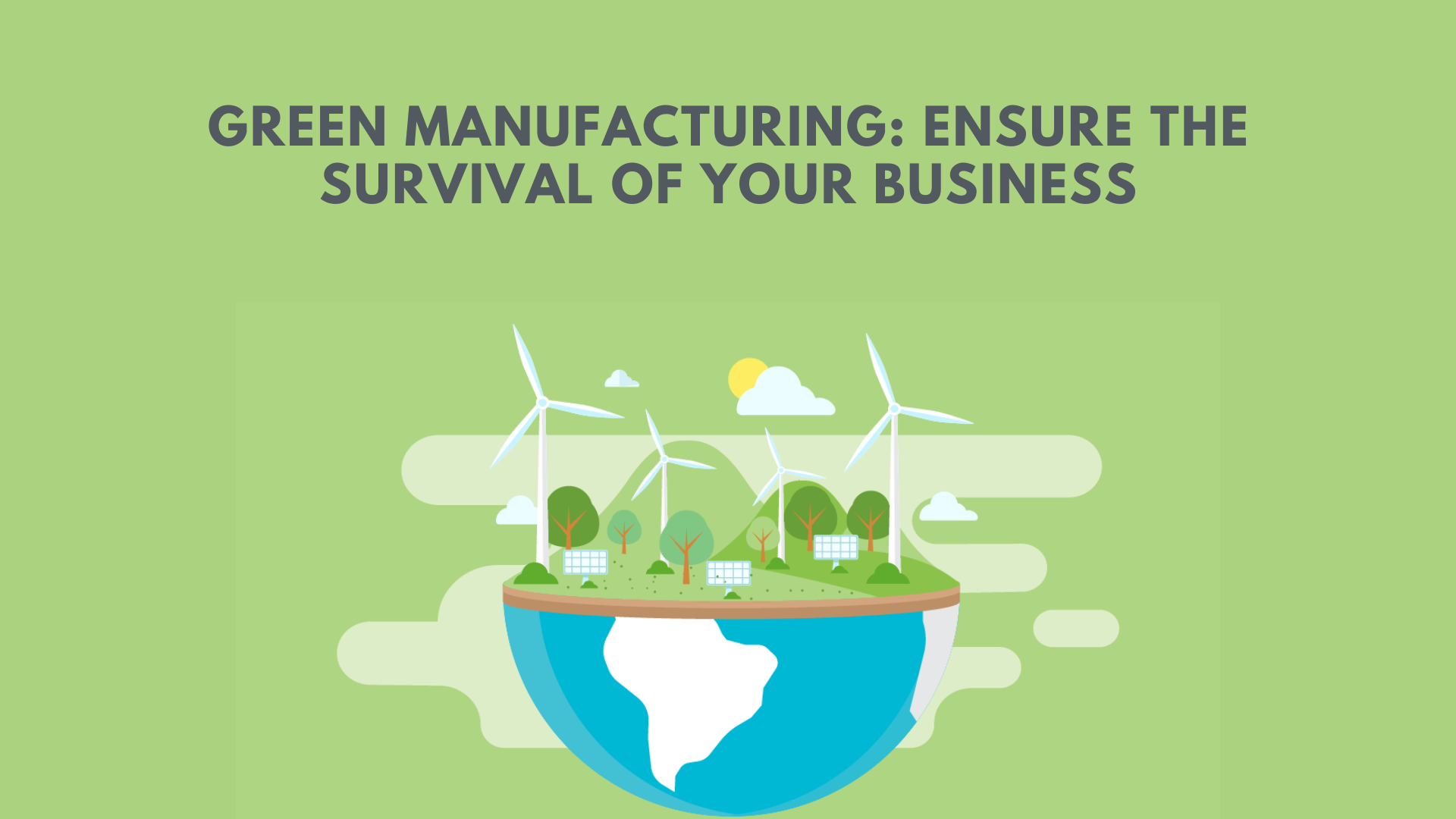In an era where environmental sustainability is becoming increasingly important, businesses are recognizing the need to adopt greener practices to stay competitive and relevant. Green manufacturing, the practice of designing and producing products in an environmentally responsible way, is not only good for the planet but also crucial for the long-term survival of businesses. In this blog, we’ll explore the concept of green manufacturing, its benefits, and how businesses can successfully implement sustainable practices to ensure their survival in a rapidly changing world.
What is Green Manufacturing?
Green manufacturing refers to the creation of manufactured products through economically-sound processes that minimize negative environmental impacts while conserving energy and natural resources. It involves adopting eco-friendly practices across the entire production cycle, from design and raw material sourcing to manufacturing, distribution, and disposal.
The Benefits of Green Manufacturing
- Cost Savings
- Energy Efficiency: Implementing energy-efficient processes and equipment can significantly reduce utility costs.
- Waste Reduction: Minimizing waste through efficient use of materials and recycling reduces disposal costs and material expenses.
- Enhanced Brand Image
- Consumer Preference: Modern consumers are increasingly eco-conscious and prefer brands that demonstrate a commitment to sustainability.
- Positive Reputation: Adopting green practices can enhance a company’s reputation, attracting environmentally conscious customers and investors.
- Regulatory Compliance
- Adhering to Standards: Many regions have strict environmental regulations. Green manufacturing ensures compliance, avoiding potential fines and legal issues.
- Future-Proofing: Anticipating and adapting to future regulations can protect a business from sudden compliance costs and disruptions.
- Innovation and Market Advantage
- Sustainable Products: Developing eco-friendly products can open up new market opportunities and differentiate a business from competitors.
- Innovation Drive: Embracing sustainability can foster innovation, leading to improved processes and new business models.
- Employee Satisfaction
- Workplace Environment: Sustainable practices often lead to a safer and healthier work environment, boosting employee morale and productivity.
- Attracting Talent: A commitment to sustainability can attract talent who prioritize working for responsible and forward-thinking companies.
Implementing Green Manufacturing
- Conduct an Environmental Audit
- Assess Current Impact: Evaluate the environmental impact of current manufacturing processes, identifying areas for improvement.
- Set Goals: Establish clear, achievable goals for reducing environmental impact, such as lowering carbon emissions or waste reduction targets.
- Invest in Energy-Efficient Technology
- Upgrade Equipment: Replace outdated machinery with energy-efficient alternatives to reduce energy consumption.
- Renewable Energy: Consider integrating renewable energy sources, such as solar or wind power, into manufacturing operations.
- Adopt Sustainable Materials and Processes
- Eco-Friendly Materials: Source raw materials that are renewable, recyclable, or have a lower environmental impact.
- Efficient Processes: Optimize manufacturing processes to minimize waste, energy use, and emissions.
- Implement Waste Management Practices
- Reduce, Reuse, Recycle: Implement practices to reduce waste generation, reuse materials where possible, and recycle remaining waste.
- Circular Economy: Embrace circular economy principles by designing products for longer life cycles, reparability, and recyclability.
- Engage Employees and Stakeholders
- Training and Education: Educate employees about the importance of sustainability and train them in eco-friendly practices.
- Stakeholder Collaboration: Work with suppliers, customers, and other stakeholders to promote and implement sustainable practices throughout the supply chain.
- Monitor and Report Progress
- Track Metrics: Regularly monitor key environmental metrics to measure progress toward sustainability goals.
- Transparent Reporting: Communicate progress transparently to stakeholders, showcasing commitment to green manufacturing.
Real-World Examples
- Patagonia: Known for its commitment to sustainability, Patagonia uses recycled materials in its products, advocates for environmental causes, and encourages customers to buy used gear or repair existing items.
- Tesla: Tesla’s focus on electric vehicles and energy solutions not only reduces emissions but also drives innovation in sustainable transportation and renewable energy storage.
- Unilever: Unilever’s Sustainable Living Plan aims to decouple the company’s growth from its environmental footprint, focusing on reducing waste, water use, and carbon emissions.
Conclusion
Green manufacturing is not just a trend but a necessity for businesses aiming to survive and thrive in the future. By adopting sustainable practices, companies can reduce costs, enhance their brand image, comply with regulations, drive innovation, and improve employee satisfaction. As the world moves toward greater environmental responsibility, businesses that embrace green manufacturing will be better positioned to ensure their long-term survival and success. Start your green journey today and secure a sustainable future for your business.









